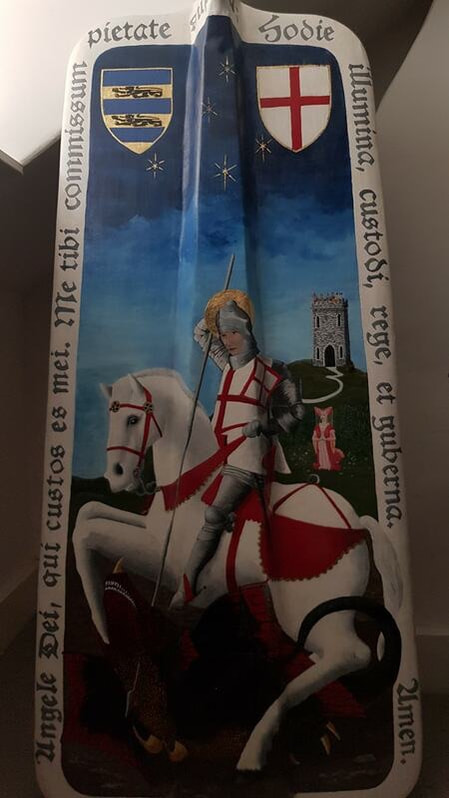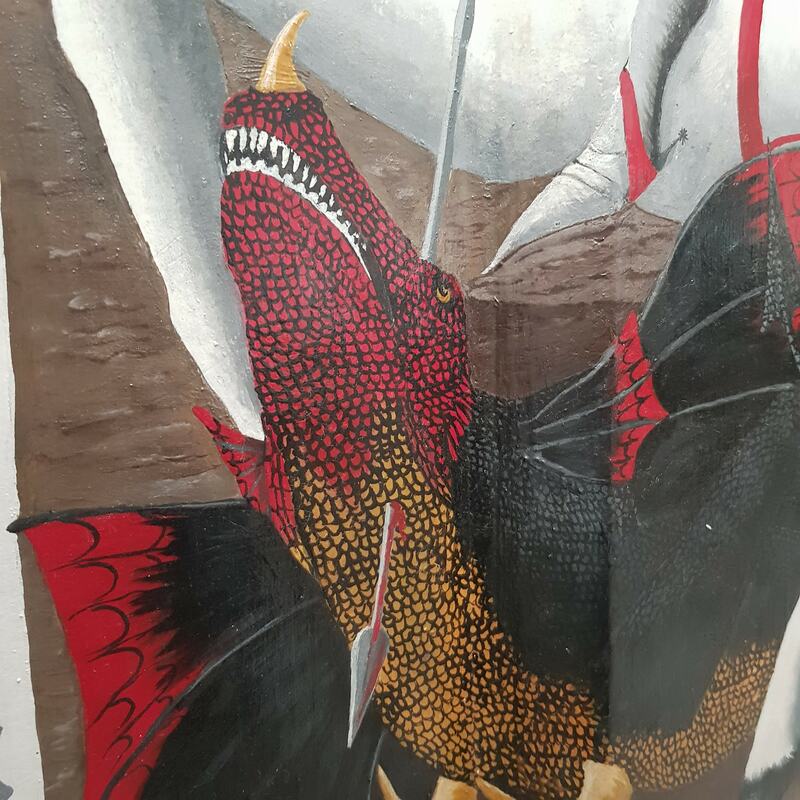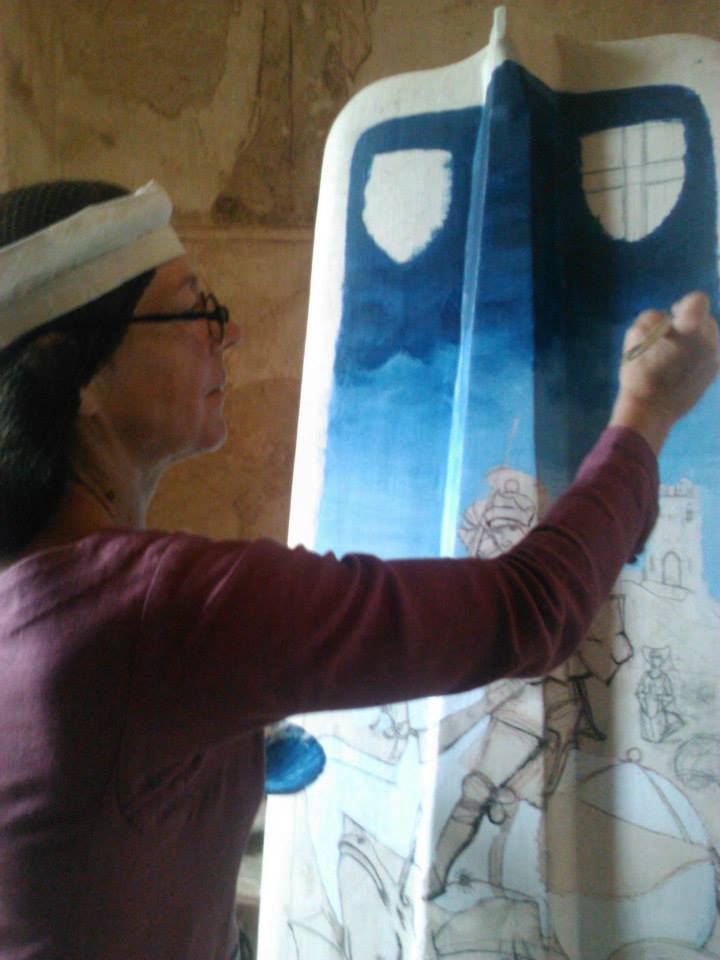| I really quite like St George. For a start he's the patron saint of quite a few places including England (since the 14th century) and Malta, and I am a quarter English and a quarter Maltese. St George isn't just the patron saint of countries and cities, but also soldiers and armourers. Not surprising then that he is often depicted in the most beautiful of armours. The real St George was a Roman soldier, most likely born into a noble family in Cappadocia, an area that is now part of modern day Turkey. In around 303 AD, Emperor Diocletian had St George tortured and then executed near Lydda in Palestine for refusing to denounce his faith in Christ, making him one of the early Christian martyrs. But what of the dragon? |
Angele Dei,
qui custos es mei,
Me tibi commissum pietate superna;
Hodie illumina, custodi, rege, et guberna.
Amen.
** You can often catch Ross demonstrating her medieval illumination and painting skills with NANMA, a medieval re-enactment group based in Norwich.





 RSS Feed
RSS Feed